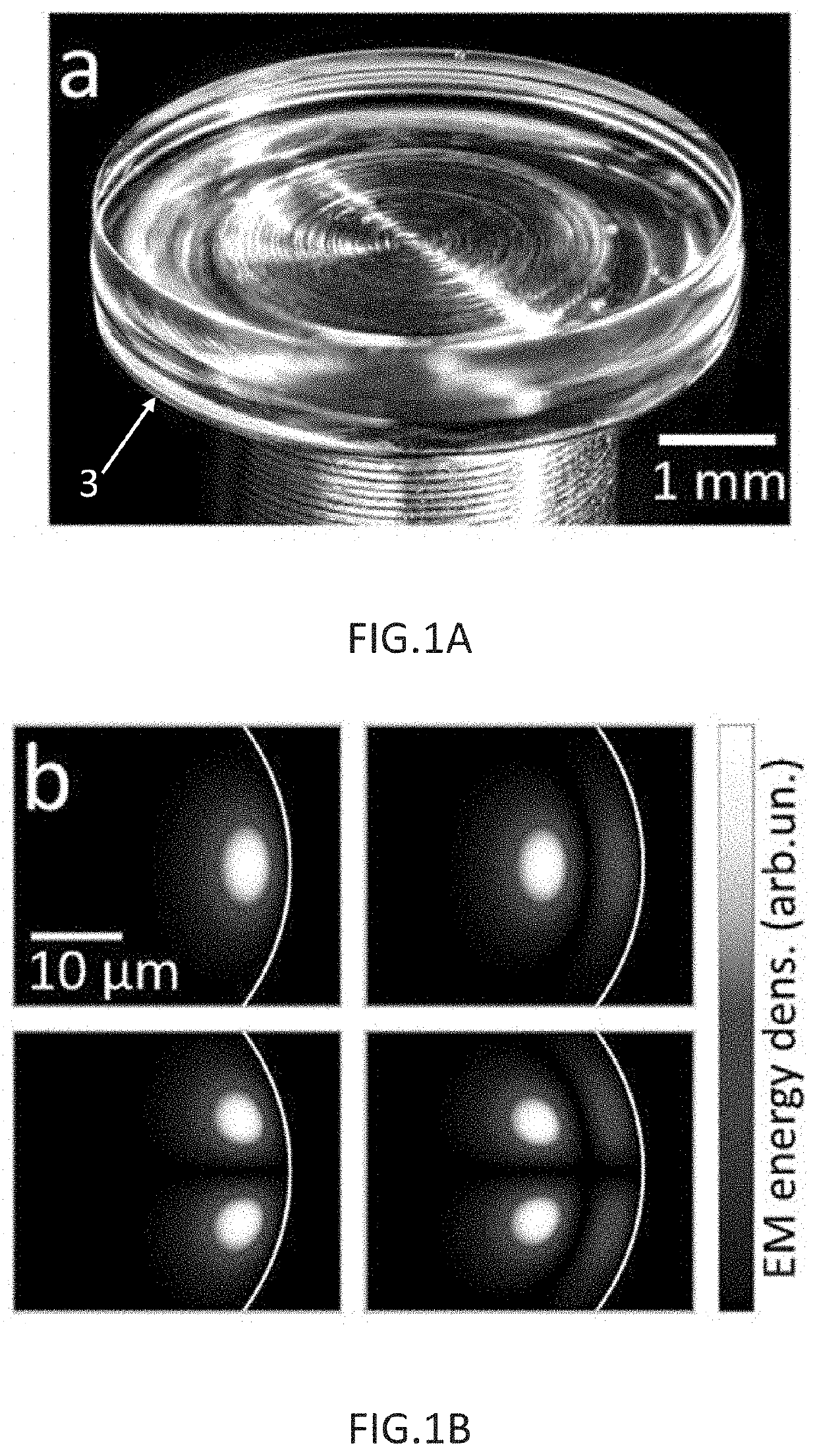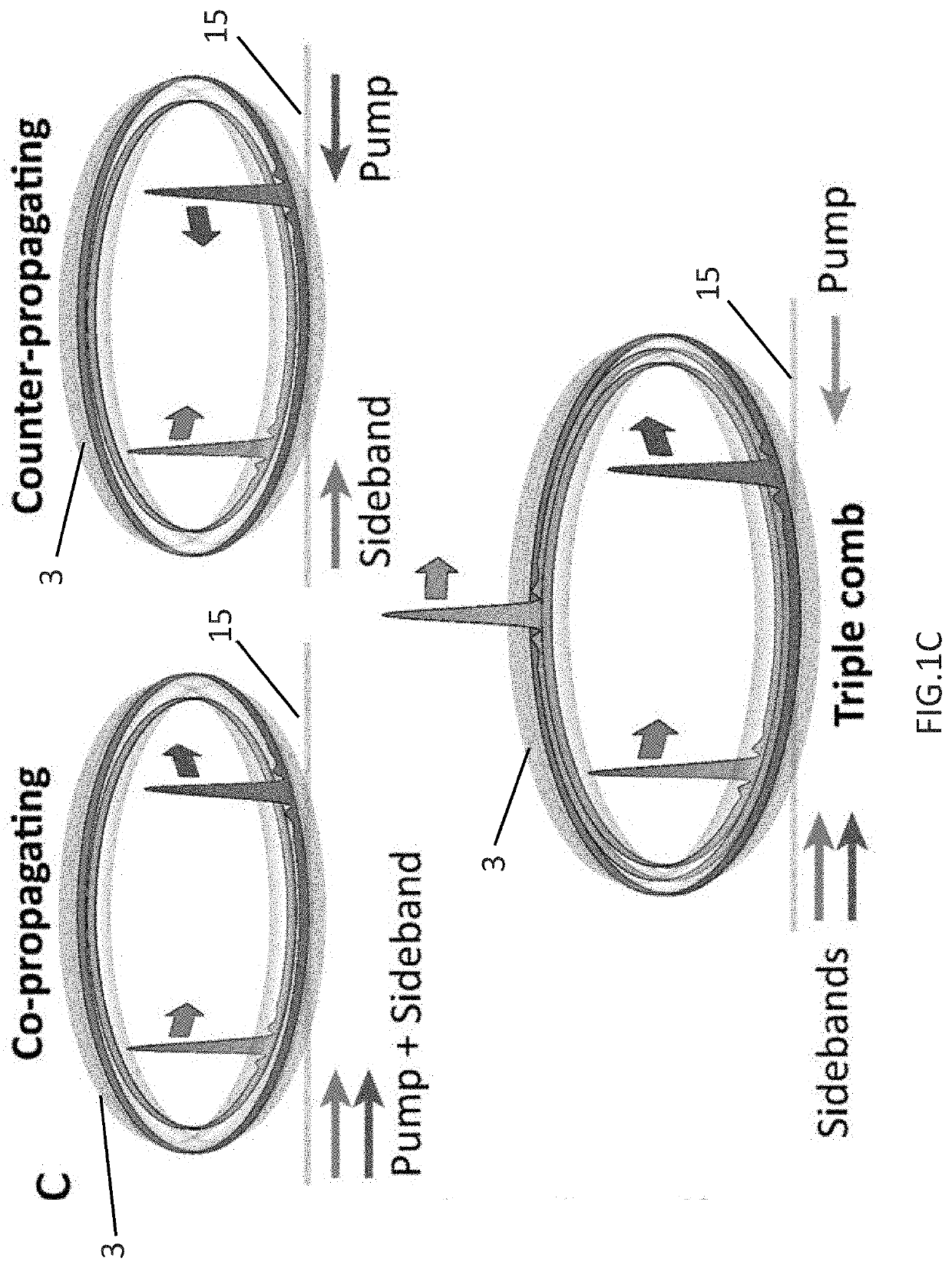Multiple soliton comb generation method and device
a soliton comb and generation method technology, applied in the field of spatial multiplexing of soliton microcombs, can solve the problems of complex schemes, complex structures, and complex schemes of multiple laser frequency combs, and achieve the effects of improving stability, reducing the number of soliton combs, and improving the stability of the system
- Summary
- Abstract
- Description
- Claims
- Application Information
AI Technical Summary
Benefits of technology
Problems solved by technology
Method used
Image
Examples
Embodiment Construction
[0062]In spatial division multiplexing, different spatial modes of an optical fiber are used as additional parallel channels to transmit data. Due to the constant raise of data traffic, this technique is becoming progressively more relevant, as it can be exploited to increase the capacity of optical fibers, as demonstrated by using few-mode fibers. Similar to optical fibers, optical microresonators in general also exhibit multiple spatial mode families, that can provide additional degrees of freedom in which light can propagate, allowing for example, to fulfil phase matching for second harmonic generation. This disclosure describes a method and device for spatial multiplexing of dissipative Kerr solitons (DKS) in a microresonator, i.e. the simultaneous generation of DKS states in several spatial modes of a resonator.
[0063]DKSs are self-localized pulses of light circulating in coherently-driven passive optical resonators with Kerr nonlinearity and spontaneously form in the context of...
PUM
| Property | Measurement | Unit |
|---|---|---|
| wavelength | aaaaa | aaaaa |
| acquisition time | aaaaa | aaaaa |
| radius | aaaaa | aaaaa |
Abstract
Description
Claims
Application Information
 Login to View More
Login to View More - R&D
- Intellectual Property
- Life Sciences
- Materials
- Tech Scout
- Unparalleled Data Quality
- Higher Quality Content
- 60% Fewer Hallucinations
Browse by: Latest US Patents, China's latest patents, Technical Efficacy Thesaurus, Application Domain, Technology Topic, Popular Technical Reports.
© 2025 PatSnap. All rights reserved.Legal|Privacy policy|Modern Slavery Act Transparency Statement|Sitemap|About US| Contact US: help@patsnap.com



